The chiller has now become an indispensable accessory for a Reef Aquarium, to host corals and to mantain them in good health even in summer, without risking the phenomena of bleaching, and even without going to affect the health of fish.
Eric H. Borneman in his book Aquarium Corals : Selection, Husbandry, and Natural History (which I recommend strongly to buy by clicking on the title) speaking about temperature, remembers some areas of the reef, which have averages 28°C, 30°C of maximum peak, and minimum of 21°C. In our house, in summer the temperature could have sudden increasing. If we consider that, physically, limits aquarium may not have temperatures below the ambient temperature, unless special arrangements, we get that is easy to reach temperatures well above 35°C, given by ambient temperatures above 30°C, strong lighting and all the heat induced from pumps.

Having to deal with electricity bill, now arrived at a huge cost, we try to lower the minimum temperature in winter and at the same time increase the maximum temperature in summer, trying to do survive the most of our corals. We are also always looking for alternatives that allow us to reduce the release of heat in the aquarium during the summer and maybe could release some heat in winter. From this point of view I have yet to understand if a pump like the Vortech, with outside motor is good or bad… although so it does not transmit heat in the aquarium during the summer… not transmit even in winter, thus making us spend money to heat the tank, a fanciful hypothesis would be to use internal pumps and HQi lamps in winter to give a lot of heat to the tank, and change in summer with T5 (or LED) and pumps with outside motor … just fantasy …
In any case, then in summer we must do something to cool our tank, and we have two methods, the use of a chiller or the use of fans to increase evaporation in an aquarium that will reduce the temperature.
The fans have the advantage to be relatively cheap, but are aesthetically questionable especially if we want to make use of tangential fans, most reliable and effective, would also need to have at least a temperature controller to function optimally and to avoid excessive cooling of the water, and quite annoying side effect of greatly increase evaporation and therefore require a very large tank refilling. A few years ago my experience, gained from the use of three 25 watt tangential fans and lighting based on two 250 watt HQi lamps and two 54 watt T5 tubes, was to have up to 8/10 liters of water evaporated each day in summer on a tank of 323 liters, and failure to meet the adjusted maximum temperature of 28.3 ° C so I had to have at least twenty days a month the HQi off for too much heat generated.
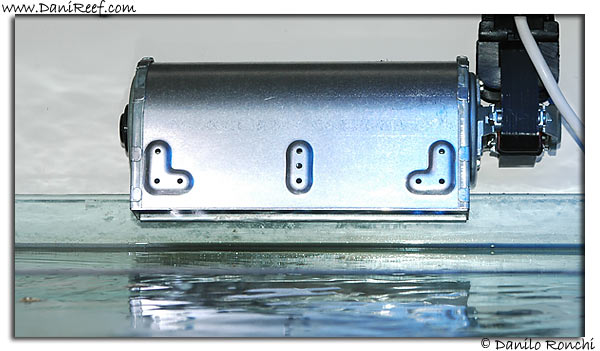
After trying a couple of years ago a Aquamedic Titan 250 by 1/8 HP (100W power consumption for 190W of cooling efficiency) I went looking for a more powerful chiller to cool in the best way my tank of 393 liters (130x55x55) that I had recently returned to use HQi lamps (Elos E-Power 2×250 with manta and led light). The choice fell on a TECO TR15, intermediate model of the famous italian Brand.
I admit the power consumption are, always in this article, based on italian values. In U.S.A. the watts are slightly different because of different frequency (220V vs 110V).
I reviewed an Aquamedic Titan 250 Chiller some year ago, but the review is available only in Italian, sorry for that, but clicking on the name you could read it.

The packaging is solid and bulky, because it has to contain the non-pocketable TR15, 43x27x40h cm and weighs 18 kg. Inside you can find the user manual and the connection valves.
Technical specs:
| Technical specs from Teco data sheets |
|
| watts | 350 W |
| Ecological refrigerant | R134a |
| HP | 1/5 HP |
| Volts/Hz | 230V – 50Hz 230V – 60Hz 115V – 60Hz |
| exchanger | titanium |
| weight | 18 kg |
| dimensions | 43x27x40h |
| diameter pipes | 5/8″ or 3/4″ |
| dB / dB (silent mode) | 40 – 38dB |
| temperature control | Digital, reading precision 0,5°C, input at 0,5°C |
| cooling power T equal to 30°C thermal Power equal to 0,33 watt/lt |
Tank 350 liters > low to 15°C Tank 500 liters > low to 10°C Tank 800 liters > low to 5°C |
| flow rate | |
| best for tank to | 225 litri – 750 litri |
The Teco, a company based in Ravenna, Italy, has several chillers in his catalog to choose the right one. Currently the range comprises the following models:
| TR5 | TR10 | TR15 | TR20 | TR30 | TR60 | |
| Hp | 1/12 HP | 1/8 HP | 1/5 HP | 1/3 HP | 1/2 HP | 1 HP |
| watts | 220 W |
350 W | 480 W | 850 W | W | |
| Ecological refrigerant | R134a | R134a | R134a | R134a | R134a | R134a |
| exchanger | titanium | titanium | titanium | titanium | titanium | titanium |
| weight | kg | 15 kg | 18 kg | 20 kg | 42 kg | 50 kg |
| Ecological refrigerant | R 134 A | R 134 A | R 134 A | R 134 A | R 134 A | R 407 C |
| dB / dB (silent mode) | 39 / 37 dB | 40 / 38 dB | 41 / 39 dB | |||
| dimensions | 320 x 240 x 340(h) cm | 430 x 270 x 400(h) mm |
430 x 270 x 400(h) mm |
430 x 270 x 400(h) mm |
600 |
600 x 385 x 560 (h) mm |
| diameter pipes | mm | mm | mm | mm | mm | mm |
| Maximum litres (T house=30°, Twater=25°) |
250 litres | 500 litres | 800 litres | 2.000 litres | 3.000 litres | 5.000 litres |
| temperature control | Digital, reading precision 0,5°C, input at 0,5°C | |||||
Each chillers comes in two variants, the classic version, called TR, which I have, and the “equipped” TC, can integrate within it a heater and a UV-C Sterilization, particularly useful in aquarium with only fish, or in installations that remain fixed throughout the year.

Installation is extremely simple, because it is possible to get from Teco also insulated pipes in the correct measure so they have only to be tightened on the taps. The connections are in fact located on the rear top of the unit, making the implementation very simple. The connection valves can simply be tight by hand, having an o-ring seal that prevents leakage of water from the chiller.
Having taps at the top has a small inconvenience when we want to clean the chiller, because the dirt is inside it and you must turn it over to make a deep cleaning.
Obviously we are talking of the famous covered short, if we put them down we have more difficult installation, but we have some benefit when cleaning, and vice versa.
I recommend you to disconnect from the sump to clean it, and put your circulating pump and pipes into a basin where you will put water and hydrochloric acid (muriatic acid) to 5%, and turn on the pump for about ten minutes, so the acid will dissolve any residue of limestone. I don’t recommend to use concentrations higher than 5%. Followed of course will need to well rinse with water.
Once lighted up, and having chosen a suitable pump, Teco recommend a quite small one compared to competing brands, there is a only little annoying noise.
The display constantly shows the temperature in the tank, or rather the temperature of water which is conveyed inside, but unfortunately the display is in steps of 0.5°C, just a little for this class of equipment. I would prefer that there were close to 0.1°C. Similarly the set temperature is in steps of 0.5°C. The cycle of action is set in one degree, but you can changed in half degree via the menu by pressing set, although the Teco discourages to do so, and I also handled the Teco by biotopus II without any problems.

To set expected temperature simply press the button “set” on a chiller at this point the display will flash showing the setting temperature and you can vary it by the two arrow buttons.
In practice there is no other … you can forget to have it … and could watch when in use from the green light above the display.
Silent mode (silent) will only lower the speed of the two cooling fans, but honestly I didn’t found noticeable difference, so I never used this feature.

Once power up you notice immediately the compressor power that also if properly damped generates a little annoying but noticeable noise if the windows are closed, but with open windows are hardly noticeable, compared to other chillers that I have heard at friends house I think it is more than satisfactory from this point of view. Of course I had to install it next to the aquarium, and if I could have installed it outside, maybe on a terrace adequately protected from the sun, I would have really a marked improvement … no noise in the house 🙂
In my new tank, which you can see here “The project DaniReef” I prepared the space inside the cabinet, which will be properly ventilated, but to see how it will be, you must wait at least until the next summer, when I will update this article.
In the old tank I had placed the chiller outside the cabinet on the right side of the aquarium, so it does not give particularly annoyed at the sight.
My test
In terms of cooling I had no problem and the tank was always kept below 28°C without any problem. Obviously this fact alone says very little unless accompanied by some considerations. The tank was about as 400 liters, the heat load was mainly provided by the Elos E-Power 2×250 HQi and leds with manta, and the temperature in the house came to peaks of 35°C, I never watched the chiller on for more than 3-4 hours a day, a sign that the system was well modulated. So in terms of performance I can say absolutely nothing. Perfect, pretty quiet and efficient. We have also consider that I do not use additional fans because I think they don’t do good enough to cool as I got to write in this article: “Considerations on hot temp into the tank” where I wrote “Then I wondered if something changed if I would reverse the use of chiller with the fan. Chiller from 27°C and fan from 27.5°C, before it I had the opposite situation. The chiller consumes 117 watts and remain lit for much less time than fans, so I think that in terms of electricity consumption is similar. But it’s very remarkable the great different about the evaporation, decreased from 6 liters to 3 liters per day… ” I spoke about another chiller, but the thought I consider valid in general. Anyway I just wanted to point the finger that no tangential fan was ever used, I kept the right temperature in the aquarium with only the chiller, and, obviously, adding a fan could still improve the performance, also if you have a location worst than mine, eg with an average temperature of 37-38 ° in the house.
Obviously the fact of being fanless has not changed so much the evaporation rate, since winter it is only slightly increased from 3 to 4.5 liters per day, which allowed me to not waste too much time to refill water osmosis tank.
The temperature controller has an internal cycle of action of 1°C, as I have already written, so if you set 27°C chiller turns on when reached this temperature and it got off when achieved 26°C, even If my unit it seemed that the total difference between on and off was much closer to half a degree. Sensitivity for reading is half a degree, enabling you to read and follow the decrease of temperature in the tank. The characters of the controller are yellow on gray background, but quite readable and minimally invasive, so you can keep an eye on the temperature of the aquarium without being attracted by the brightness of the display.
The cycle of 1°C may seem a bit too wide, but only if the chiller would be much too big for the tank, because in this case the aquarium could have significant fluctuations in a short period of time because of major cooling power, without this problem my tank was been kept under control without any problem, in any case you can always set the control in half a degree.
In my humble opinion , the chiller is constructed in a impeccable way, very discreet, almost beautiful to look at, to be a box to enter the house, the coil of the refrigerant gas is obviously titanium and the chiller is equipped with a fuse protection case of overcurrent or short circuit, and has an easily removable filter below the unit which avoids clogging of the cooling fans with dust. The Teco has 2 fans that operate to cool the unit, using the silent button on the front panel can lower their speed.
The coupling between the plastics is perfect as you can see in the photos, so that when you power on the unit, apart from the obvious sound of the compressor I felt no vibration, a great sign about this.

The Noise
One problem that plagues us most aquarists is certainly noise, and the chiller is certainly an accessory little silent by definition. Apart from those who can afford to put the chiller outside his home, perhaps on the terrace, or who may have the technical side of the aquarium in a dedicated room, the noise becomes an important feature to consider.
The brochure found on Teco website shows a level of noise of 40/38dB. I will get ready to check with the equipment available to me as you can read later.
To put the chiller into our home, therefore, our next chiller exceeds at least three direct examinations, the aesthetic (usually done from our ladies who care about these things more than us) that the Teco in my humble opinion easily exceeds, the noise and the heat generated.
In my house I chose to place it near the aquarium, near the door and directly into the corridor, away from the sofa but close to the bedrooms.
From the aesthetic point of view it is presented, as we see from the photos, like a cube of gray with a yellow lcd display of generous proportions. It hasn’t any sharp but curved surfaces, the neutral gray is the color, and lack of a grid certainly helps to be a neutral insertion.

The heat generated during operation is confined near the cooler itself, and especially in the back where is the outlet of hot air. I got the idea this does not contribute significantly to increase the temperature in the house as I had the opportunity to investigate with my previous chiller, this because normally the windows are open allowing air to circulate and in those rare moments when the windows are closed it’s because I had the air conditioning on and the problem did not arise just because heat was mitigated by the condition itself.
Thanks to the chiller this summer, I never turned the air conditioner to cool the tank as I used to do in previous years, saving electricity, and without the problem of lowering pH caused by continued operation of the conditioner that limits the exchange of air between the inside and outside the home.
Returning to the noise I measured with my sound level meter, a VOLTCRAFT 320, digital sound level meter to IEC 651 Type II that for the effect of the measure is sufficiently reliable, the following values. Given the nature of the noise to be measured, all measurements were performed with the curve of attenuation dBA.
The measurements yielded the following results (all measurements were carried out with windows closed, sound level meter on a tripod, and with a minimum measurement of 120 seconds):
| Measurement Condition | Teco TR15 |
Aquamedic Titan 250 |
| Tank with all power up and no chiller – 1 meter | 46,5 dB max – 41,5 dB min | 48,7 dB |
| Tank with all power up and with chiller – 1 meter | 53,8 dB | 52,1 dB |
| Tank with all power up and no chiller – from the sofa point of view, about 5 meter | 38,1 dB | |
| Tank with all power up and with chiller – from the sofa point of view, about 5 meter | 47,9 dB | 40,2 dB |
| House noise with closed windows and the aquarium power off | 35,0 dB | 35,8 dB |
 |
 |
 |
 |
 |
 |
The first thing that comes to mind looking at the table of measurements is that changing the tank has led to a lowering noise of aquarium, which varies between 41.5 and 46.5 dB only because of the Vortech noise, if I had still the tunze stream the overall noise could be much lower than observed with the old tank.
Without looking at the table I thought the Teco could be better, evidently it has a sound not so annoying, but in any case there is, because the sound pressure increases by 1.5 dB, measured near the tank up to 7.7 dB measured at 5 m! Probably the sound of the Teco is moved on the low frequencies in my room they found a reinforcement from the walls and can also be found several meters from the chiller itself. But given the operational conditions, namely that we are in summer with the windows open and generally with much environmental noise that filters from outside, its noise level is not so noticeable and annoying. It would be interesting to redo the measurements in summer to see how the chiller is integrated into the environmental noise.
In fact the worst situation for heat usually occur in the early afternoon, when ambient noise is high and not at night, where his operation would surely be more troublesome.
In any case I’m comparing two very different coolers, the Teco has a compressor 1 / 5 HP and 350W, compared to the Titan 1 / 8 HP and 100w, it is quite natural that the noise is different.
The measured values are of my own environment, and then in other situations the measured noise could be very different, due to major or minor reinforcements at various frequencies.
As I mentioned in the introduction I’m working on my cabinet preparing my tank to hold in the chiller during this summer. At that moment I’ll just make a round of measurements to compare the noise muffled by the cabinet itself.
The Power Consumption
The choice of a chiller also involves the assessment of its power consumption. Aquarists know how the power consumption of our aquarium could impact on electrical bill, so when they are going to insert any object in the layout, they take due account of this important feature.
The Teco TR15 has an electrical power consumption of 350 watts (in 220V do you remember?), not a few in absolute terms, but from my empirical evaluations, are entirely appropriate to the type of equipment.

Thanks also to my past experience with another chiller (Titan 250 of Aquamedic), I knew that the energy consumption by the chiller is typically much less than we expect. In any case 350W are not a few especially if, during periods of intense heat, the chiller also stays powered 6-7 hours per day. Certainly it is true that, at least at my latitude (Rimini, Italy) the chiller was never very active, because at least indirectly, the energy bill did not have the rush forward I would have expected.
Of course if we consider that often in winter, the heater (300 W) is powered on up to five hours in the winter months, I’d say we have comparable values.
The right pump we need
Teco recommend for this chiller a relatively low flow of about 500 liters per hour.
In this way the water that comes out from the unit is cold enough, although you can always utilizes a pump with greater flow that will then putting less cooler water into our aquarium but with a greater flow rate. Probably the flow suggested by Teco is more efficient and thus can save energy.
In my set-up I’ve used a maxijet 1000, which should ensure a flow of 1000 liters per hour at zero head, but considering the tubes should have a quite similar flow rate to what recommended by Teco.
Since the thermostat is inside the unit, if the water flow was interrupted the chiller will be powered off itself when reaching the set temperature, without the risk of doing any problem.
I recommend to all who have the lucky to install the cooler outside the home, to well measure the flow of return pump between chiller and sump, because the distance, curves necessary and chiller lower considerably the flow. I strongly recommend to protect it from weather and direct sunlight that would inevitably lead to degradation in performance and in some cases to destroy the unit itself, as Teco itself calls it indoor chiller.

Useful Tips
The most important trick to get the best from our chiller is certainly, above all equal conditions of which we have just discussed, to place it in the best possible operational condition. One major problem is that in which the chiller cools the sump too quickly, but then this cooling is not well transferred in the aquarium.
In this regard it is necessary that the flow investing chiller is equal to what the return pump is able to bring in the tank, but it’s not enough to compare the technical specifications of the pumps, as the height the return pump must win to convey water in the tank is such that the flow rate is greatly diminished (I suggest you read this article: Return pumps: calculating the flow).
Finally, and most importantly, optimizing the function would be better able to put the feed pump inlet just below the return water from tank, so that is always invested by “hot” water coming from the tank, otherwise you likely to cool the sump and thereby create cold spots in the sump but not be able to transfer the cold to aquarium.

Some alternatives could suggest to use the same return pump to feed the chiller first and then push the water directly into tank, or placing the return pipe of the unit in the tank as if it were a second return pump. In the first case the return pump should be bigger to reflect the loss of the chiller and of the height, in the latter, it would still be necessary to provide a powerful pump because it would act as a return pump.
I obviously prefer the first method I described, namely the creation of a dual circuit in sump.
Accessories
The Teco divides its chillers in two categories, the TR and TC. The TR, like the one I used, is the classic chiller that we all know, while the TC version is just the same chiller that mounts internally an heater and a UV-C lamp, so you can delegate to units the management of heating, cooling and sterilization. And it’s possible to mount the two accessories, heater and UV-C lamp even in the TR version.
In a reef aquarium, I don’t recommend to use a UV-C lamp, except in very special cases, but nevertheless the sterilizer would be useful for those who had a fish only aquarium tank or other solutions, like for instance the tanks in restaurants where dealing the heating, cooling and sterilization.

My conclusion
What advantage does the choice of chiller than other cooling methods?
The use of a ventilating system, such as efficient tangential fans, however, involves a considerable power consumption (between 25 and 50w consumption each), a difficulty to maintain the right temperature with a side effect of an high evaporation.
With the chiller the evaporation is reduced to the limit, with different effects: less need for filling the re-filling tank and then greater autonomy in case of holiday, less waste of water because the lower the demand for reverse osmosis water. All obtained with the great advantage of having a much more stable temperature in the tank, at a cost not so high after all, if we assumed that four hours of power per day for four months in summer (June-September) came at a cost of 44 euros (4h * 350W * 120gg/1000 * 0.26 €/kWh).
Of course it is obvious that the cooling capacity is always a function of the home temperature and how many degrees you want to have in the tank.
In my experience this summer I can say that I had no problem with temperatures around 35/37°C, without the use of air conditioning in the house the chiller was powered on average between 3 to 4 hours, with peaks of about six hours a day, but I never had more than 28°C in the tank, setting 28 degrees as the maximum threshold.
As I think that buying the chiller is fully recommended, Teco TR 15 is really a great chiller, very quiet when compared to the powers involved, very well built and at least under my test conditions, very efficient.
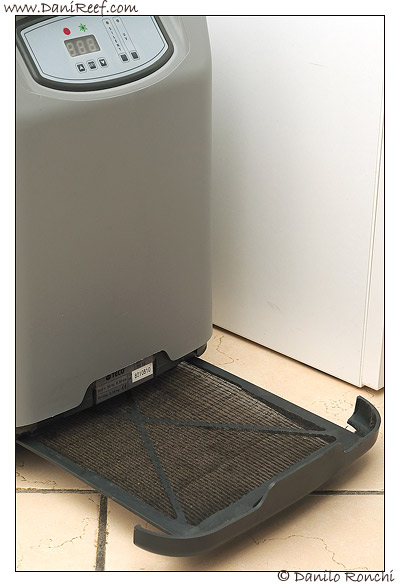
It’s absolutely not be reproduced, even part of the text and photos in this article,
without author’s permission,while the quotation is permitted (and welcome)
with a link to this article and a use of only one picture.


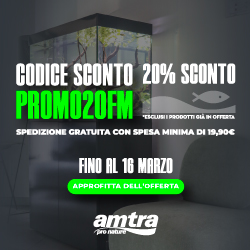

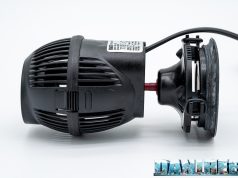
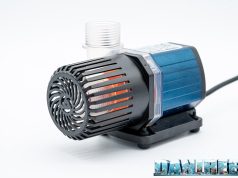
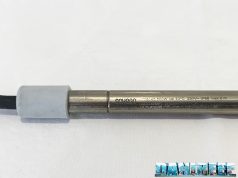

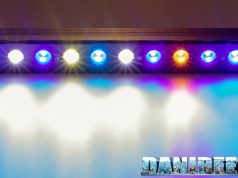
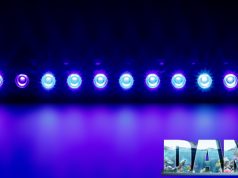

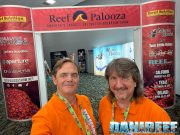

[…] can be useful. You can find the complete article in english version, with every pictures, here: Chiller Teco TR15 – the complete review : DaniReef The chiller has now become an indispensable accessory for a Reef Aquarium, to host corals and to […]
[…] by TECO – AquaCave (has PDF manual link at bottom) Chiller Teco TR15 – the complete review : DaniReef (great reviw that talks about size pump needed) Bob Goemans' Reviews: TECO SeaChill Chiller […]
[…] fino a 300 litri (nel mio sarebbe proprio il minimo, meglio forse un TR15 usato… di cui DaniReef ha scritto in passato per averlo provato a lungo personalmente)Artika 300 (nuovo circa 300€) per acquari fino a 200 […]
How long does the chiller take to cool down your tank? I have a 680 liters tank, and one of the concern i have is heat from the chiller given if it runs for hours trying to cool the tank.
Hi Junne
I think that better is the chiller that runs for all the day. Anyway, how is the room temperature? Because the problem is how many degrees you have to lower, and how many lighting you have on tank.
If you tell me your system, I can try to give you my personal advice.
Let me know
Danilo
During summer times Room temp would o as high as 31 C. And i normally maintain a 25 C temp in my reef tank. During these hot summer months theres a 6 degree concern i have to deal with and my existing chiller which is undersize but still functional runs about 5 to 6 hours in some nights. Also, are these chillers assembled in China? Why?
In this conditions I think it could be better to buy the TR20 instead of TR15.
I think in this way you can have more power when you need, at not a so big increase in cost.
I use the TR15 with Teco E-Chill http://www.danireef.com/2011/06/20/world-premiere-the-teco-e-chill-is-here-how-setting-in-this-incredible-video-by-danireef/ , with also 35° in the room, 2x250w metal halide lamps and 400 liters, and I’ve no problem at all.
So I think you could buy the TR15 and the Three fan Teco E-Chill, or the TR20.
As far as I Know, they’re assembled in Italy, I saw with my eyes, where they assembled. Yes, I spoke of two years ago, but I think none it’s changed.
What do you think?
Danilo
That was my plan and go with a TR20, i have canopy fans and a sump fan to remove air from my water system. I have aquaillumination for lighting and about 250 watts combined for pumps. How long does your TR15 run to cool your tank during summer or hot months?
In the hottest days about 3 or 4 hours, but when we have more than 30°C in the home.
I hope this can help
Danilo
[…] of this chiller are profoundly different from its predecessors, both the Teco TR 15 (review), as well as the other products in this series, which I reviewed a few years ago. This chiller […]